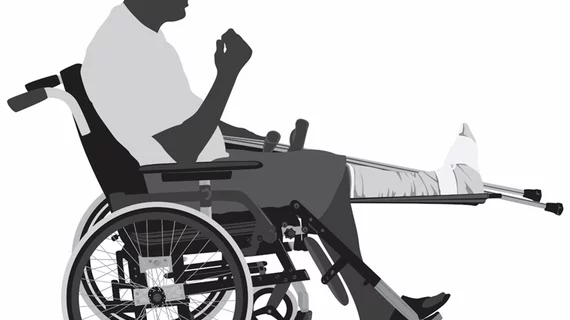Men treated for prostate cancer have increased fracture risk, yet few complete DXA screening
New research published in JAMA Network Open highlights the importance of dual-energy x-ray absorptiometry screening in older men who are treated for prostate cancer.
Out of more than 50,000 men included in the study, 17.5% involved sustained a fracture after beginning treatment with androgen deprivation therapy for prostate cancer, but only 7.9% received DXA screening. Experts involved in the study found racial, socioeconomic and geographic disparities in the screening rates, which led them to cite the need for more targeted implementation strategies in this cohort of patients.
“Androgen deprivation therapy (ADT) can negatively impact bone health, resulting in decreased bone mineral density and fractures,” corresponding author Maria E. Suarez-Almazor, MD, of the Department of Health Services Research at University of Texas MD Anderson Cancer Center, and coauthors explained. “Several systematic reviews from the early 2000s that reported on the risk of fracture with the use of ADT among men with prostate cancer as well as more recent guidelines from professional organizations advocate screening for osteoporosis using dual-energy x-ray absorptiometry.”
Yet, despite these recommendations, bone mineral density screening rates remain low among men who undergo treatment. Given that these men face increased risk and that fractures, especially major osteoporotic ones, decrease quality of life and increase mortality, it is important to ensure they DXA screenings are more widely utilized. Doing so enables providers to accurately evaluate patients’ risk so that preventative measures can be taken when necessary.
According to the researchers’ evaluation of 54,953 men, these fractures are common, but screenings unfortunately are not. When analyzing how many of these men underwent DXA screening 12 months before and 6 months after their first ADT claim, they found that only 4362 men (7.9%) completed it. That’s compared to 9365 of these men (17.5%) who developed any type of fracture and 4114 (7.7%) who sustained a major osteoporotic fracture.
DXA screening was found to have significant associations with lower risks of major fractures. Patients less likely to complete screening were single, non-Hispanic Black, living in small urban areas and areas that had lower educational levels. All these men, however, had access to Medicare insurance that covers DXA screening, which highlights a potential issue with outreach and patient education pertaining to the recommendations, the experts wrote.
“These findings suggest that DXA screening is important for the prevention of major fractures among older men with prostate cancer and that implementation strategies are needed to adopt bone health screening guidelines in clinical practice,” the authors wrote. “Early intervention with bone-modifying agents could potentially reduce the burden of illness associated with fractures among older men who are survivors of prostate cancer.”
More on fracture detection:
AI assists radiologists in detecting fractures, improves workflow
Routine CT scans offer radiologists opportunity to detect costly bone problems
Radiomics-clinical model accurately predicts osteoporotic spinal fracture timeline on CT images
Radiologists often misread common pelvic fractures, pushing some to unneeded specialty care

